Orana Wildlife Park
On Saturday Gaby and I visited the Orana Wildlife Park, located just west of Christchurch along the Waiamakariri River. The park focuses mostly on large game animals from Africa, but does have a few exhibits of native New Zealand wildlife. Orana is described as an "open range" park, which means, when possible, fences or containment features blend in with the environment - except, of course, for the large, industrial wire screens which separate the lions from the visitors :-) As it turns out, Orana designers took much of the native terrain into account, utilizing the naturally shallow water table to maintain moats which form part of a natural containment perimeter around the paddocks
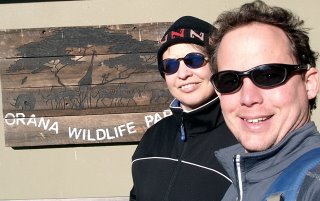
The water table has recently risen in the vicinity due to a higher than average rainfall. The higher water table has led to flooding of some areas, such as the ring tailed lemur paddock. Fortunately, a boat has been provided for them.
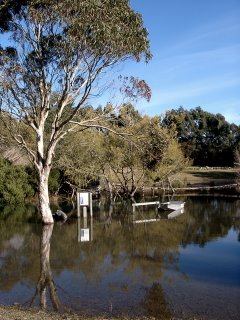
Orana Wildlife Park does house some native New Zealand species, such as the kiwi. The kiwi is a nocturnal animal, so it sleeps during the day and forages during the night. This arrangement would normally make for a boring display - the birds would all be asleep during normal business hours. To add more interest to the display, kiwi are usually housed in what is known as a "kiwi house." The birds are placed inside a light tight building, and the lights are slowly shifted twelve hours off. In other words, inside the building the birds are fooled into thinking it's dark outside, when they are more active. This was perhaps the first kiwi house I have visited in which the kiwis were active! It was great to see these big funny looking birds waddle around the enclosure. Flash photography was not allowed inside the kiwi house, so you will have to settle for this lifesize replica of a kiwi - the bird, not the person :-)
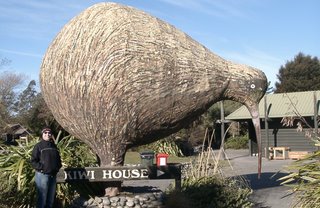
There was a nice display of some native and endemic bird species, such as the kea, tui, and pukeko. They have a small aviary which contains a variety of New Zealand birds. The exhibit was lush and the air filled with interesting bird calls.

A picturesque clumb of stalks in the moat which formed the front perimeter of the Rhino paddock. I felt quite safe knowing this clump of twisted sticks and twiggs formed the heart of the perimeter enclosure and would stop a potential charge from the 4000 pounds of malice roaming beyond the moat.

I had to try out the flying fox located in the Adventure Playground. In New Zealand a flying fox is a system where a cable is suspended between two points with a basket or seat attached to the cable with a pulley. These systems were originally developed as a means of transporting goods or people across a river or gorge. The flying fox has since been transormed into an exhilerating use of a zip line!
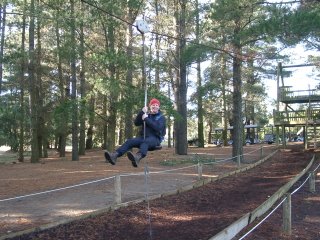
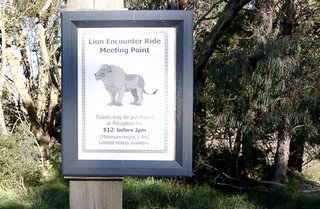
I am fascinated with big cats. I grew up with house cats and have always thought it interesting that our pet cats share many of the same behaviours with their distant wild cousins. I enjoy watching the big cats on display, especially when I see the same behaviours my house cats have shown. I like to imagine that my house cat is a wild cat, hunting for prey in the wild. From afar, I can even imagine one of these as a house cat - from afar! From close up, you can see these cats are not quite the same as your house cat.
The Lion Encounter Ride: It seems Orana Wildlife Park offers a special visitor engagement whereupon a park visitor may encounter the feeding of lions from a most advantageous point of view. It was just after 2:00pm and I hadn't eaten lunch yet; at least this would provide me with the opportunity to watch other critters eat. Upon paying the necessary $12.00/person fee I was handed two tickets - printed on red paper no less. The intrigue rose when I read the tickets. Printed on the tickets was a list of rules:
Rule #1. I will follow the instructions of the animal keeper at all times.
Rule #2. I will keep my whole body (including arms & legs) behind the central barrier.
Rule #3. I will not attempt to touch the lions under any circumstances
Rule # 4. I am taller than 1.4 metres.
After reading this list of rules, a few thoughts came to mind: Rule#1 is sensible enough. I wonder what happend that caused the phrase "including arms & legs" to be added to Rule #2 ? Isn't Rule#3 a bit redundant? I mean, this is supposed to be an encounter with feeding lions. And apearently, according to Rule#4, whatever size the appetizer, it appears the lions have a minimum size for a main...
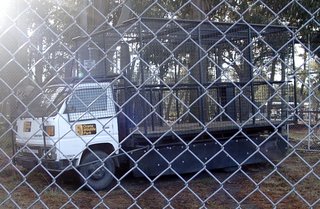
According to the animal keeper, in captivity these lions usually eat around 8 pounds of meat at a sitting. We were then informed that if the lions are fed that much every day they become lazy. So, to maintain healthy activity in the animals, they are not fed every day, but have "fast days," which provides the big cats ample opportunity to digest the bone and sinew they eat along with the more choice bits. Needless to say, these lions had an appetite.
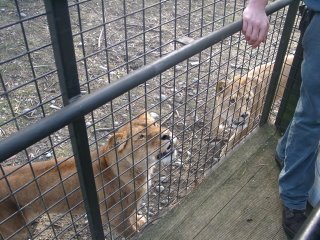
These were BIG CATS. They had BIG CLAWS and BIG TEETH. I guess our animal keeper has not read Rule #2.
Oddly enough, their breath smelled faintly of liver and kidney slices in gravy...
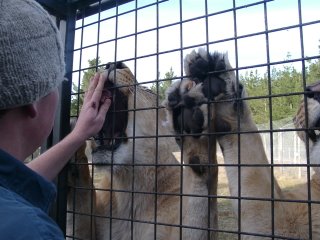
Our lion encounter vehicle stopped in front of the large viewing stand positioned safely outside the paddock (do they know something we don't?). At this point a couple of the more "active" cats decided to jump up on top of the cage. Above our heads. The big cats walked back and forth across the top of the cage. The lion was hungry. It was drooling on us. Occasionally the animal keeper would reach into a bucket, pull out another chunk of meaty bits and push it through the heavy metal cage for the big cat to gulp down. The big cat jumped off the top of our cage as easily as it jumped up - what a site!
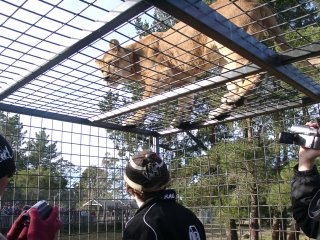

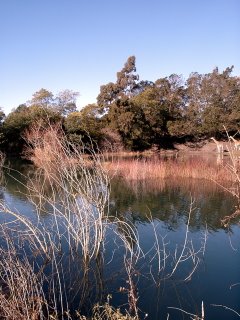
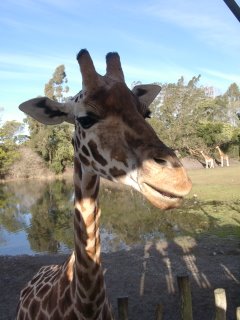
Yes, you can feed the giraffes. If you can hold onto the stalk hard enough the giraffe will wrap its toungue around the branch and strip it clean of leaves.

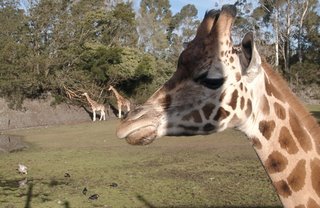



4 Comments:
I think this might be your best post yet. I love the pictures, and the text really lets us into the Lion's heads. Yikes.
(BTW, this is Jesse)
Hi Steven & Gaby,
This looks like a definate must do when we come to New Zealand. Great photos!!
Love, Mom & Dad
I always wonder what the animals do when the people leave. I think they play cards and drink beer.
Great site lots of usefull infomation here.
»
Post a Comment
<< Home